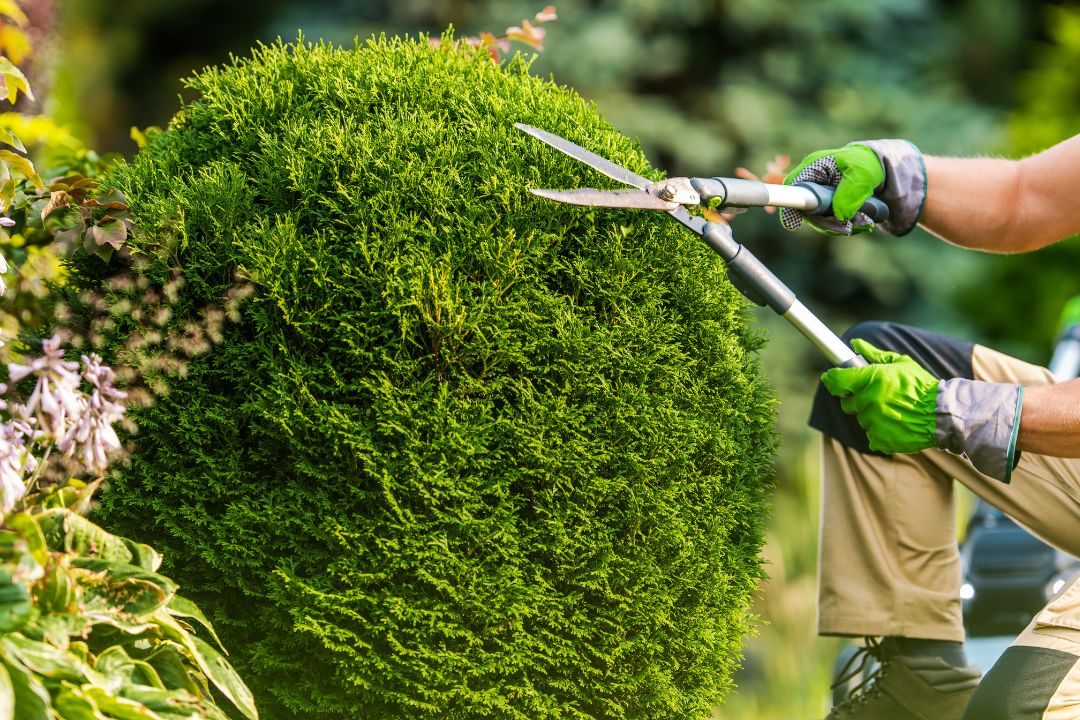Tree trimming is both an art and a science that plays a crucial role in maintaining the health, aesthetics, and safety of your landscape. Whether you have a small backyard garden or a sprawling estate, understanding the importance of proper trimming can make a significant difference in the overall appeal and longevity of your trees. This practice involves more than just cutting branches; it requires knowledge of tree biology, growth patterns, and pruning techniques. A skilled arborist considers factors such as branch angles, tree balance, and potential hazards before making precise cuts. By shaping trees effectively, trimming enhances not only their appearance but also their resilience to environmental stressors like storms and pests. It’s an investment in the long-term health and beauty of your outdoor environment, ensuring that your trees thrive for years to come.
Why Trimming Tree Matters
- Health and Growth:
Regular trimming of trees promotes healthier growth by removing dead or diseased branches that can hinder the tree’s overall vitality. It allows for better air circulation and sunlight penetration, essential for photosynthesis and nutrient absorption.
- Safety:
Overgrown branches can pose hazards, especially during storms or high winds. Trimming helps eliminate weak or overextended branches that could fall and cause damage to property or injury to people.
- Aesthetics:
Well-maintained trees enhance the visual appeal of your landscape. Proper trimming can shape trees for a more pleasing appearance, maintaining symmetry and balance within your outdoor space.
When to Trim Your Trees
Timing is crucial when it comes to tree trimming. While some general guidelines apply, such as avoiding trimming during extreme weather conditions, the specific timing can vary depending on the type of tree and its growth patterns. Here are some considerations:
- Deciduous Trees:
These trees, which shed their leaves annually, are often best trimmed during late winter or early spring when they are dormant. This timing minimizes stress on the tree and allows for vigorous growth in the coming season.
- Evergreen Trees:
Evergreens can be trimmed throughout the year, but late winter to early spring is often recommended for major pruning. Light trimming can be done in summer to shape growth.
- Flowering Trees:
Timing for trimming flowering trees depends on when they bloom. For those that bloom in spring, prune them right after flowering to encourage new growth and preserve next year’s blooms.
Techniques for Effective Trimming:
- Pruning Deadwood:
Start by identifying and removing dead, damaged, or diseased branches. These not only detract from the tree’s appearance but also can harbor pests and diseases.
- Thinning:
Thinning involves selectively removing branches to improve air and light penetration. It reduces the weight on branches, minimizing the risk of breakage.
- Shaping:
Use pruning techniques to shape the tree according to your desired aesthetic. This can include maintaining a specific height, creating a canopy, or promoting a particular growth pattern.
- Directional Pruning:
Encourage growth in a specific direction by pruning branches accordingly. This is useful for trees near structures or pathways where you want to control growth.
Professional Trimming Tree vs. DIY
While basic pruning and minor trimming can be done by homeowners, larger trees or trees near power lines should be handled by professionals. Certified arborists have the expertise and equipment to safely trim trees while ensuring their health and structural integrity. They are trained to assess the tree’s condition, identify potential hazards, and use proper techniques such as rope rigging and aerial lifts for difficult-to-reach areas. Additionally, arborists understand local regulations regarding tree trimming near power lines, ensuring compliance and safety for both the tree and nearby structures. Hiring professionals not only reduces risks but also promotes optimal tree health and longevity, making it a worthwhile investment in your landscape’s maintenance.
Benefits of Professional Trimming Tree
- Safety:
Trained professionals follow safety protocols to prevent accidents and property damage during trimming operations.
- Health:
Arborists understand tree biology and can make precise cuts that promote healing and minimize stress on the tree.
- Quality Work:
Professionals ensure that trimming is done correctly, enhancing the tree’s appearance and longevity.
Conclusion
Tree trimming is a vital aspect of landscape maintenance, offering numerous benefits for both the health of your trees and the overall aesthetics of your property. Whether you have deciduous, evergreen, or flowering trees, proper trimming techniques can enhance growth, safety, and visual appeal. Consider consulting with a professional arborist for larger trees or complex trimming needs to ensure the best results for your landscape.
FAQs
- How often should I trim my trees?
The frequency of Fort Collins Tree Service depends on the tree species, its growth rate, and your desired aesthetic. Generally, annual trimming for young trees and biennial or triennial trimming for mature trees is recommended.
- Can I trim my trees myself?
Basic pruning and minor trimming can be done by homeowners, but for larger trees or trees near power lines, it’s safer and more effective to hire a professional arborist.
- Will trimming damage my trees?
When done correctly, tree trimming enhances tree health and longevity. Improper trimming, such as topping or excessive pruning, can damage trees. It’s essential to follow proper pruning techniques or seek professional advice.


